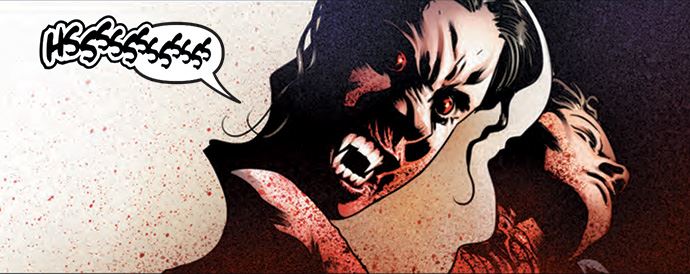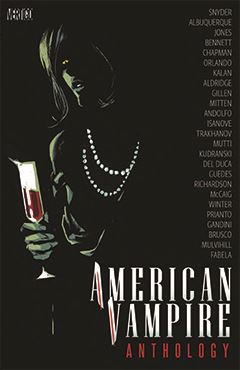- Comics
- Comics Reviews
- Manga
- Comics Reviews
- European Comics
- News
- Comics News
- Press Releases
- Columns
- Spotlight
- Digital Comics
- Webcomics
- Cult Favorite
- Back Issues
- Webcomics
- Movies
- Toys
- Store
- More
- About

By Philip Schweier
October 18, 2016 - 08:59
I’m not
especially fond of vampires. Not in the “Indiana Jones doesn’t like snakes”
sort of way, I’m rather indifferent. In the past 20+ years they’ve become
over-used, in my opinion. It seems as if they’re either unholy monstrosities
(like Dracula), or they’re tragic, tortured figures condemned to an un-living
hell, like Anne Rice’s vampire, LeStat.

So I’ve never read Vertigo’s American Vampire series, and one thing that becomes obvious in this anthology collection is there are a number of recurring characters who are interwoven throughout the various eras depicted. The anthology is series of stories set in different times, different places: 18th century Japan, the Old West, the Great Depression, etc. Several are set in assorted cities around the world during the 1960s. I find this Cold War setting significant, as there appears to be a cold war brewing between humanity and the Undead.
A common thread among the stories is surprise, as it seems great effort is taken to conceal who the vampire might be, and if it’s obvious, then question arises as to its motives.
One of the
weaker selections is “The Bleeding Nun,” by Clay McLeod Chapman and Richard
Isanove. In the story, a production of the play is about to ensue, when a
stagehand comes upon a feeding nosferatu. This leads to catastrophe for all
concerned. But much of the story isn’t so much as written as it is quoted from
the play. I found this to become tiresome rather quickly, but others might
disagree.
The book presents a wide variety of artistic styles, from the moody to the cartoony. It becomes a sampler any aspiring comic book artist might appreciate.
Perhaps were I more familiar with the backstory of the characters involved, or have a greater appreciation for vampires, I might have enjoyed this book more. It’s not the worse bit of vampire fiction I’ve ever seen. At least they don’t sparkle.